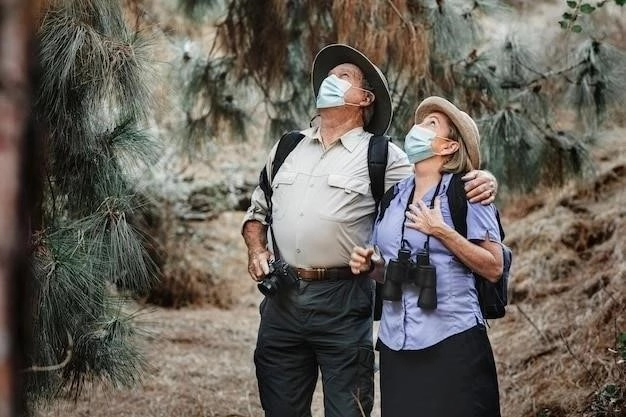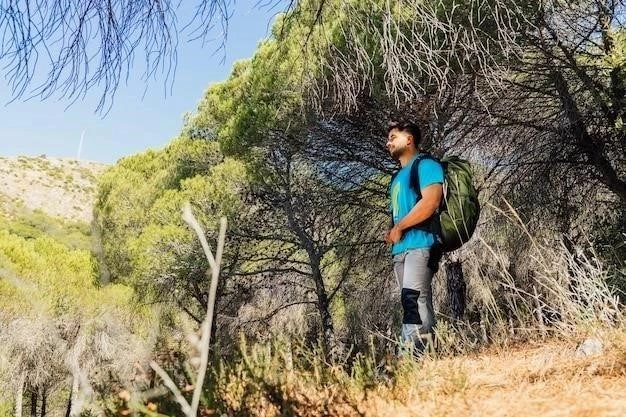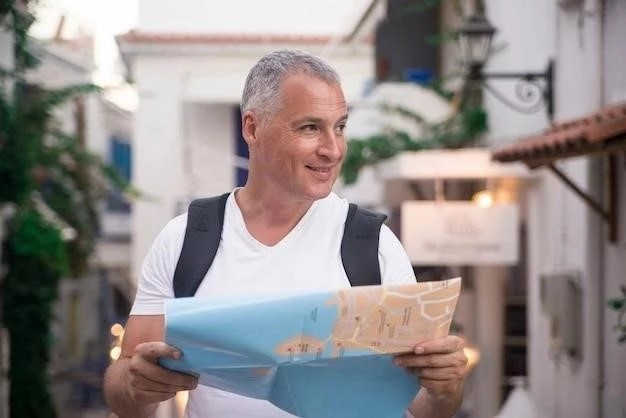Chad Travel Guide 2024
Journey into the heart of Africa with this comprehensive guide to Chad. Explore stunning natural wonders, from the sweeping dunes of the Sahara to the lush oases of the Ennedi Massif. Discover a land rich in cultural heritage and encounter the warmth of the Chadian people.
General Information
The Republic of Chad, a landlocked nation in north-central Africa, presents a travel experience unlike any other. Bordered by Libya to the north, Sudan to the east, the Central African Republic to the south, Cameroon, Nigeria, and Niger to the west, Chad embodies a captivating tapestry of landscapes and cultures. From the arid expanse of the Sahara Desert in the north to the lush savannas and wetlands of the south, the country’s diverse geography is a testament to Africa’s breathtaking beauty.
N’Djamena, the nation’s bustling capital, serves as the primary entry point for most travelers. French and Arabic share the stage as the official languages, while a multitude of local dialects paint a vibrant linguistic landscape. The country operates on Central Africa Time (CAT), which is two hours ahead of Coordinated Universal Time (UTC+2).
While Chad possesses an undeniable allure for the intrepid traveler, it is essential to acknowledge that tourism infrastructure is still developing. Travel within the country may require flexibility and a spirit of adventure. However, for those seeking authentic experiences and a chance to witness the raw beauty of untouched landscapes, Chad offers a journey of profound reward.
Visas and Entry Requirements
Prior to embarking on your journey to Chad, it is essential to ensure you possess the necessary documentation for entry. A valid passport with at least six months of validity remaining beyond your intended stay is mandatory for all visitors.
In addition to a passport, most nationalities are required to obtain a visa to enter Chad. Visas can be obtained from a Chadian embassy or consulate in your home country. It is advisable to initiate the visa application process well in advance of your planned travel dates, as processing times can vary.
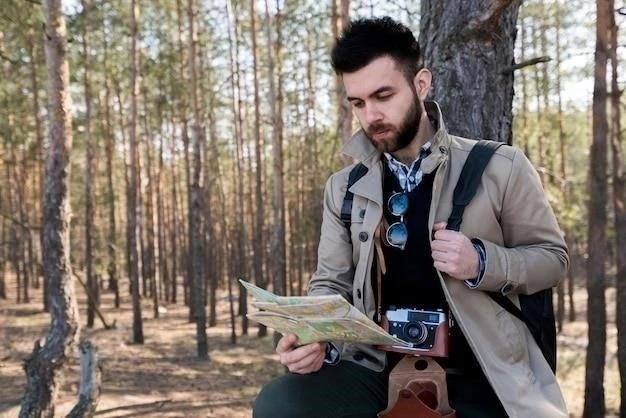
When applying for your visa, be prepared to provide the following: a completed visa application form, your passport (with sufficient validity), two recent passport-sized photographs, proof of onward travel (such as a return ticket), and proof of accommodation in Chad. It is also recommended to have proof of yellow fever vaccination, as this may be requested upon arrival.
Please note that visa regulations can change. It is always recommended to consult with the nearest Chadian embassy or consulate for the most up-to-date information regarding visa requirements and any specific documentation needed based on your nationality.
Safety and Security
While Chad holds immense beauty and cultural riches, it is essential to approach travel within the country with a comprehensive understanding of the safety and security landscape. Like many nations, Chad presents certain challenges that necessitate a heightened awareness and proactive approach to personal safety.
Petty crime, such as theft and pickpocketing, can occur, particularly in urban areas and crowded markets. It is advisable to exercise vigilance, safeguard your belongings, and avoid displaying large sums of money or expensive jewelry. When venturing out, especially at night, opting for well-lit and populated areas is recommended.
The political and security situation in Chad can be fluid and unpredictable. Before your departure, it is crucial to stay informed about current events and any potential risks through reliable news sources and travel advisories issued by your government. Certain regions within the country may experience heightened security concerns, and it is essential to heed any travel restrictions or warnings issued by local authorities.
Registering your presence with your embassy or consulate upon arrival in Chad is a prudent step. This enables them to provide you with timely assistance or information in case of emergencies. Maintaining open communication with your family or friends back home, informing them of your whereabouts, and providing them with emergency contact information is also advisable.
Getting There and Around
Reaching Chad typically involves air travel, as the country’s land borders can present logistical challenges. N’Djamena International Airport (NDJ) serves as the main gateway, with regular flights connecting to major cities in Africa and a limited number of international destinations.
When planning your journey, it is advisable to book flights well in advance, especially if traveling during peak seasons. Airlines offering services to Chad include Ethiopian Airlines, Air France, Turkish Airlines, and ASKY Airlines, among others. It is recommended to compare flight options and prices from different providers to secure the most favorable arrangements.
Once you have arrived in N’Djamena, navigating within the country requires careful consideration. Domestic flights are available to larger towns and cities, with companies such as Toumaï Air Chad offering scheduled services. However, flight schedules can be subject to change, and it is advisable to reconfirm departures locally.
Road travel in Chad can be challenging, particularly outside major urban centers. Road conditions vary significantly, and traveling long distances by road may require time and flexibility. Bush taxis (shared minibuses) are a common mode of transport for shorter journeys, while hiring a private vehicle with a driver is often recommended for longer or more remote itineraries.
Accommodation
Chad offers a range of accommodation options to suit various budgets and preferences, though it is essential to note that tourism infrastructure is still under development, particularly outside of the capital city. Advance bookings are highly recommended, especially during peak seasons or when traveling to more remote areas.
In N’Djamena, you’ll find a selection of international hotels offering comfortable accommodations and amenities such as air conditioning, internet access, and restaurants. These hotels cater primarily to business travelers and expatriates, offering a higher standard of comfort and service.
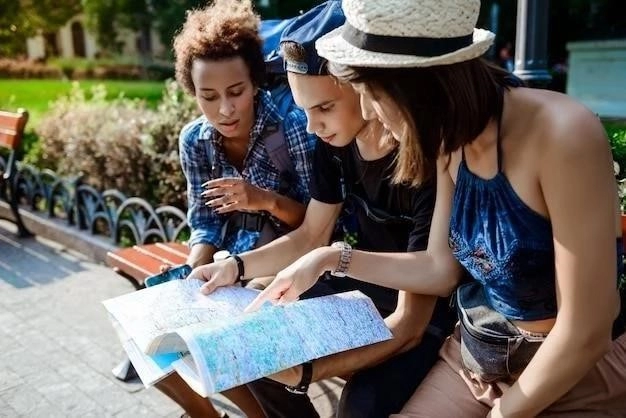
For those seeking a more local experience or venturing beyond the capital, smaller guesthouses and locally run hotels are available. While these options may offer more basic amenities, they provide an opportunity to engage with Chadian hospitality and experience local life firsthand.
When traveling to more remote regions, particularly for wildlife viewing or exploring the Sahara Desert, camping may be the only accommodation option. Organized tours often provide camping equipment and facilities, but it’s essential to inquire about these arrangements in advance.
Food and Drink
Exploring the culinary landscape of Chad is an adventure for the palate, offering a blend of flavors influenced by Arab, Central African, and Sahelian culinary traditions. While basic staples form the foundation of many meals, the creative use of spices and unique regional ingredients creates a tapestry of tastes that reflect the country’s diverse cultural influences.
Millet, sorghum, and rice serve as the cornerstone of the Chadian diet, often accompanying grilled meats, stews, and sauces. “Boule,” a thick porridge-like dish, is a staple, while “carottes sauce,” a flavorful carrot stew, is a popular accompaniment. Goat and beef are common proteins, often grilled or prepared in rich, slow-cooked stews seasoned with onions, tomatoes, and a blend of aromatic spices.
Freshwater fish, a delicacy in this landlocked nation, finds its way onto plates in various forms, from grilled to smoked, adding a welcome change to the meat-centric cuisine. In southern regions, where tropical fruits flourish, mangoes, bananas, and papayas offer a refreshing burst of sweetness.
When it comes to beverages, strong, sweet tea, often brewed with mint, is a national favorite, enjoyed throughout the day. Locally produced fruit juices offer a refreshing alternative. While alcoholic beverages are available in larger cities, it’s essential to consume them respectfully and in moderation.
Money and Costs
The official currency of Chad is the Central African CFA franc (XAF), which is pegged to the euro. It is advisable to familiarize yourself with the current exchange rate prior to your arrival to facilitate budgeting and financial transactions.
While major credit cards may be accepted in some larger hotels and establishments in N’Djamena, their use is not widespread throughout the country. It is essential to carry sufficient local currency, especially when traveling outside urban centers.
Cash can be exchanged at banks and authorized exchange bureaus, with banks generally offering better rates. It’s advisable to exchange currency at official establishments to avoid the risk of counterfeit notes or unfavorable exchange rates.
The cost of travel in Chad can vary significantly depending on your chosen style of accommodation, transportation, and activities. Generally, accommodation in international hotels in N’Djamena tends to be more expensive than in smaller towns or guesthouses.
It’s recommended to budget accordingly, factoring in expenses such as accommodation, meals, transportation, visa fees, and any planned activities. Having a realistic budget will help ensure a smoother and more enjoyable travel experience.
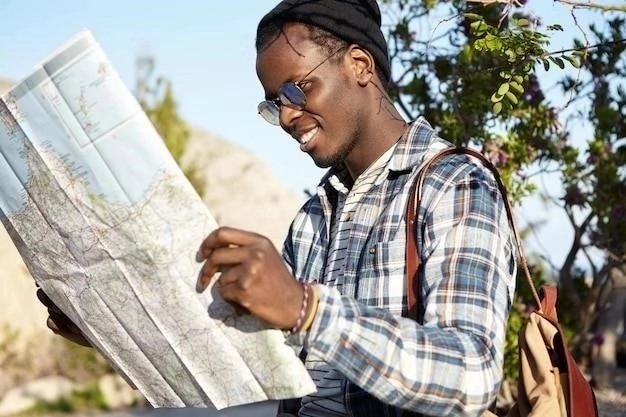
Health

Prioritizing your health while traveling in Chad is paramount to ensuring a safe and enjoyable journey. Taking proactive steps to safeguard your well-being will allow you to embrace the wonders of this captivating nation with peace of mind.
Consulting with a travel health professional at least six weeks before your departure is essential. They can provide personalized advice on recommended vaccinations, necessary medications, and any specific health risks associated with the regions you plan to visit.
Proof of Yellow Fever vaccination is mandatory for entry into Chad. In addition, vaccinations for Hepatitis A and B, Typhoid, Meningitis, and Rabies are highly recommended. It’s crucial to ensure your routine vaccinations are up-to-date as well.
Malaria is present in Chad. Taking antimalarial medication, as prescribed by your doctor, is crucial. Additionally, using insect repellent, sleeping under mosquito nets, and wearing long-sleeved clothing, particularly during dawn and dusk, are effective preventative measures against mosquito bites.
Culture and Customs
Chad’s cultural tapestry is as rich and diverse as its landscapes, woven from a myriad of ethnic groups, each contributing unique traditions, languages, and customs. Navigating this cultural mosaic with sensitivity and respect will enhance your travel experience, fostering meaningful interactions and lasting impressions.
Islam and Christianity are the predominant religions, and their influence permeates daily life. Dressing modestly, particularly when visiting religious sites or rural communities, is a sign of respect. Women, especially, may find it appropriate to cover their heads with a scarf.
Hospitality is deeply ingrained in Chadian culture. It is customary to greet people warmly, taking time for introductions and inquiries about well-being. Accepting offers of tea or food is considered polite, even if you choose to partake sparingly.
Family holds paramount importance in Chadian society. Addressing elders with respect and seeking their guidance on cultural protocols is highly regarded. When interacting with locals, a courteous and patient demeanor will be met with warmth and appreciation.
Things to Do
Chad, a land of captivating contrasts, offers a treasure trove of experiences for the adventurous traveler. From traversing the otherworldly landscapes of the Sahara Desert to encountering diverse cultures and witnessing remarkable wildlife, a journey through Chad is an unforgettable exploration of Africa’s raw beauty and untamed spirit.
For those drawn to the allure of the world’s largest hot desert, the Sahara’s mesmerizing expanse offers a surreal and humbling experience. Embark on a camel trek across windswept dunes, witness the ethereal beauty of a desert sunset, and camp beneath a canopy of stars, far from the reach of civilization.
Venture into the heart of the Ennedi Massif, a sandstone wonderland sculpted by millennia of wind and erosion. Here, towering rock formations, natural arches, and hidden canyons reveal ancient rock art, whispering tales of civilizations past. Explore remote oases, encounter nomadic communities, and discover a world untouched by time.
Wildlife enthusiasts will find solace in Zakouma National Park, a testament to successful conservation efforts. Home to a thriving ecosystem, the park harbors a remarkable diversity of species, including elephants, lions, giraffes, and a rich variety of birdlife. Embark on game drives, guided walks, and immerse yourself in the sights and sounds of Chad’s untamed wilderness.
Zakouma National Park
In the heart of southeastern Chad, a beacon of conservation shines amidst the vast expanse of the Sudano-Sahelian plains – Zakouma National Park. A testament to the power of dedicated conservation efforts, Zakouma stands as a refuge for a remarkable diversity of flora and fauna, offering visitors an immersive experience in the heart of untamed Africa.
Once on the brink of collapse due to poaching, Zakouma has experienced a remarkable resurgence, with its elephant population, once decimated, now steadily increasing. This success story is a testament to the commitment of conservationists, park rangers, and local communities working together to protect this invaluable ecosystem.
Embark on game drives across Zakouma’s diverse landscapes, from savanna woodlands and open grasslands to seasonal floodplains, each harboring a unique array of wildlife. Witness herds of elephants roaming freely, marvel at the grace of giraffes against the setting sun, and observe lions, leopards, and cheetahs as they patrol their domains.
Zakouma’s avian diversity is equally impressive, with over 400 bird species recorded within the park. Birdwatchers will delight in spotting vibrant bee-eaters, majestic raptors soaring overhead, and flocks of waterbirds congregating around watering holes during the dry season.
Ennedi Massif

In the northeastern embrace of Chad’s Sahara Desert lies a sandstone labyrinth of breathtaking beauty and profound cultural significance – the Ennedi Massif. Sculpted by millennia of wind and erosion, this otherworldly landscape captivates the imagination, revealing towering rock formations, hidden canyons adorned with ancient rock art, and oases teeming with life in the heart of the arid expanse.
Journey through a geological wonderland, where sandstone arches soar above narrow canyons, and natural rock bridges connect towering plateaus. Explore hidden gueltas, natural water reservoirs nestled within the massif’s embrace, providing sustenance for desert wildlife and offering respite from the harsh desert conditions.
The Ennedi Massif holds not only geological wonders but also cultural treasures. Discover a legacy etched in stone – ancient rock art, dating back thousands of years, adorns cave walls and rock shelters throughout the region. These intricate paintings and engravings offer a glimpse into the lives and beliefs of past civilizations, depicting scenes of hunting, rituals, and the animals that once roamed this now-arid landscape.
Encounter the nomadic communities who call this unforgiving yet captivating landscape home. The Tubu people, known for their resilience and traditional way of life, have traversed the Ennedi Massif for centuries, their lives intrinsically linked to the rhythms of the desert. Engage with their culture, learn about their customs, and gain a deeper appreciation for the harmonious relationship between humanity and nature in this extraordinary environment.
Guelta d’Archei
Nestled within the dramatic sandstone canyons of the Ennedi Massif lies Guelta d’Archei, a sight of stark beauty and ecological significance in the heart of the Sahara Desert. This permanent guelta, a rare and vital water source in this arid environment, draws life to its edge, creating a vibrant oasis amidst the desert’s embrace.
As you approach Guelta d’Archei, the landscape transforms dramatically. Towering sandstone cliffs, carved by centuries of wind and erosion, rise majestically, their ochre hues glowing in the desert sunlight. Descend into the canyon, and the air cools, a sense of tranquility descending as you approach the water’s edge.
The guelta’s waters, a deep emerald green, reflect the surrounding cliffs, creating a mesmerizing spectacle. This vital resource attracts a surprising array of wildlife, from nomadic bird species seeking respite on their long journeys to desert-adapted mammals drawn to the promise of water. Observe camels quenching their thirst, their silhouettes mirrored in the still water, and witness the harmonious coexistence of life in this harsh yet captivating environment.
Adding to Guelta d’Archei’s allure is the presence of Nile crocodiles, remnants of a time when the Sahara flourished as a verdant savanna. These ancient reptiles, perfectly adapted to survive in this harsh environment, are a testament to the enduring power of nature and serve as a living link to the Sahara’s distant past.
Lake Chad
Once a vast inland sea, a lifeblood for millions and a testament to nature’s boundless capacity, Lake Chad stands as a stark reminder of the delicate balance between humanity and the environment. Straddling the borders of Chad, Niger, Nigeria, and Cameroon, the lake’s shrinking shoreline tells a tale of climate change, human impact, and the urgent need for sustainable practices.
While greatly diminished from its former glory, Lake Chad remains a place of profound beauty and cultural significance. Its shallow waters, dotted with islands and fringed by papyrus reeds, harbor a rich biodiversity, supporting a variety of fish species, migratory birds, and other wildlife.

A visit to Lake Chad is a journey into a world where life adapts to an ever-changing environment. Observe local fishermen casting their nets from traditional wooden canoes, their livelihoods intrinsically linked to the lake’s bounty. Witness the vibrant cultures of the communities living along its shores, their traditions and way of life shaped by the ebb and flow of the waters.
While acknowledging the challenges facing Lake Chad, it is essential to recognize the ongoing efforts to revitalize this precious ecosystem. Initiatives aimed at restoring water flow, promoting sustainable fishing practices, and empowering local communities offer a glimmer of hope for the future of this iconic African landmark.
Tibesti Mountains
In the heart of the Sahara Desert, a volcanic massif rises dramatically from the arid expanse, its jagged peaks piercing the clear desert sky – the Tibesti Mountains. This remote and unforgiving landscape, a world of stark beauty and geological wonders, beckons adventurous souls seeking an off-the-beaten-path experience in one of Africa’s most challenging yet rewarding destinations.
Formed by volcanic activity millions of years ago, the Tibesti Mountains stand as a testament to the Earth’s raw power. Towering calderas, remnants of ancient eruptions, dominate the landscape, while deep canyons, carved by centuries of erosion, cut through the volcanic rock, revealing layers of geological history.
Emi Koussi, a dormant volcano and the highest peak in the Tibesti Mountains, soars to an elevation of 3,415 meters (11,204 feet), its summit offering breathtaking panoramic views of the surrounding desert. Trekking through this challenging terrain, navigating steep slopes and rugged trails, rewards adventurers with a sense of accomplishment and unparalleled vistas of the Sahara’s immensity.
The Tibesti Mountains, though seemingly inhospitable, harbor a surprising array of life, adapted to survive in this extreme environment. Observe the resilience of desert flora clinging to life in sheltered canyons, and encounter unique wildlife, including the rare and elusive Barbary sheep, perfectly adapted to navigate the steep slopes and rocky terrain.
Musée National N’Djamena
In the heart of Chad’s bustling capital, nestled amidst the city’s vibrant energy, stands the Musée National N’Djamena, a repository of the nation’s cultural heritage and a window into its rich and diverse past. Though modest in size, this museum offers a captivating journey through Chad’s history, art, and traditions, providing visitors with a deeper understanding of this often-overlooked African nation.
Step inside the museum’s halls and embark on a chronological exploration of Chad’s past. Discover archaeological treasures unearthed from ancient sites, revealing the presence of sophisticated civilizations that thrived in the region thousands of years ago. Admire intricate pottery shards, tools fashioned from stone and bone, and remnants of early settlements, offering a glimpse into the daily lives of Chad’s earliest inhabitants.
The museum’s collection extends beyond archaeology, encompassing a diverse range of artifacts that reflect the country’s cultural tapestry. Explore traditional musical instruments, their intricate designs and unique sounds a testament to the power of music in Chadian society. Marvel at colorful textiles, woven with intricate patterns and vibrant hues, reflecting the skills and artistry passed down through generations.
While the Musée National N’Djamena may have faced challenges in preserving its collection due to Chad’s tumultuous past, its importance as a cultural institution remains undiminished. It stands as a testament to the resilience of the human spirit, the enduring power of art and culture, and the importance of preserving heritage for generations to come.

Grande Mosquée N’Djamena
In the heart of Chad’s vibrant capital, amidst the bustling streets and vibrant commerce, stands the Grande Mosquée N’Djamena, a beacon of faith and a testament to the enduring presence of Islam in Chadian society. This architectural gem, with its soaring minarets and elegant arches, draws the faithful and visitors alike, offering a glimpse into the spiritual heart of the nation.
As you approach the mosque, its grandeur comes into focus. The towering minarets, reaching towards the heavens, dominate the skyline, while the mosque’s pristine white facade, adorned with intricate geometric patterns, shimmers under the Chadian sun. Step through its ornate doorways, and a sense of tranquility envelops you, a welcome respite from the city’s bustling energy.
Inside the mosque’s main prayer hall, a vast and airy space, the faithful gather for prayer. Intricately woven carpets, adorned with geometric designs, cover the floor, while sunlight streams through arched windows, illuminating the space with a soft, ethereal glow. Observe the reverence and devotion of those at prayer, their voices joining in unison, a testament to the unifying power of faith.
While the Grande Mosquée N’Djamena is primarily a place of worship, visitors are welcome to respectfully observe and appreciate its architectural beauty and spiritual significance. Remember to dress modestly, covering your head and shoulders, and be mindful of prayer times, during which access may be restricted.
Avenue Charles de Gaulle
Avenue Charles de Gaulle, a grand boulevard pulsating with life, serves as N’Djamena’s central artery, reflecting the city’s dynamic spirit and its unique blend of tradition and modernity. Named after the renowned French general and statesman, this iconic avenue offers a captivating glimpse into the heart of Chad’s capital, where commerce thrives, cultures intertwine, and the pulse of daily life beats with a vibrant rhythm.
As you stroll along Avenue Charles de Gaulle, observe the eclectic architectural tapestry that lines its sidewalks. Colonial-era buildings, remnants of Chad’s past as part of French Equatorial Africa, stand as silent witnesses to history, their faded grandeur whispering tales of a bygone era. Modern structures, testaments to the city’s growth and aspirations, rise alongside, showcasing a blend of architectural styles.
The avenue’s vibrant energy is palpable. Street vendors, their stalls laden with colorful fabrics, handcrafted jewelry, and everyday necessities, engage in lively banter with passersby. Cafés and restaurants, offering a taste of Chadian and international cuisine, spill out onto the sidewalks, their tables abuzz with conversation and laughter.
As the sun begins its descent, casting a warm glow over the city, Avenue Charles de Gaulle transforms into a captivating spectacle of light and energy. The avenue comes alive with activity as residents emerge to enjoy the cooler evening air, socializing with friends, enjoying meals with family, or simply absorbing the vibrant atmosphere that permeates this central hub of N’Djamena.
Ounianga Lakes
In the unforgiving embrace of the Sahara Desert, where sand dunes stretch towards the horizon and the sun beats down with relentless intensity, lies a sight of astonishing beauty and ecological significance – the Ounianga Lakes. This system of eighteen interconnected lakes, a UNESCO World Heritage Site, stands as a testament to nature’s resilience and a beacon of life in one of the world’s most arid regions.
The Ounianga Lakes, nestled within a depression in northeastern Chad, owe their existence to a unique combination of factors. Their waters, a mix of fresh and saline, are replenished by a combination of rainfall and groundwater seeping up from beneath the desert sands. This delicate hydrological balance, combined with limited evaporation rates, has allowed the lakes to endure for millennia, creating a vibrant oasis in the heart of the Sahara.
Each of the eighteen lakes possesses its own distinct character, varying in size, depth, color, and salinity. Some lakes shimmer with deep emerald hues, their waters rich in algae and teeming with life. Others, their shores fringed by reeds and papyrus, provide sanctuary for a variety of bird species, their calls echoing across the still desert air.
The Ounianga Lakes are not only a testament to nature’s resilience but also a vital resource for the nomadic communities who traverse the surrounding desert. Observe the traditional ways of life that have evolved in harmony with this unique ecosystem, from the use of reeds for crafting mats and baskets to the intricate systems of irrigation that sustain life in this arid land.



